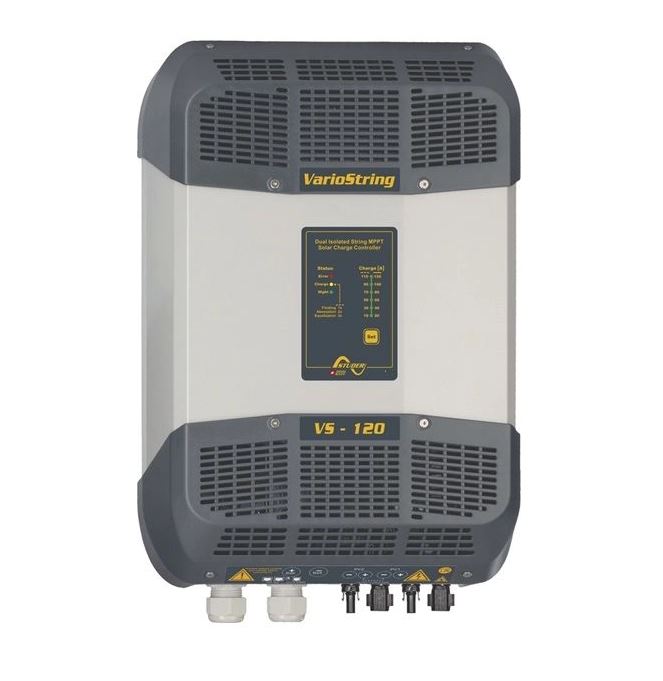SOLAR REGULATOR (Studer VS-120) 120A, 48V
Valid Article
SOLAR REGULATOR (Studer VS-120) 120A, 48V
Form
A solar regulator connects the output of photovoltaic (PV) solar panels to a battery system. It adapts the voltage-current levels at the input to the battery voltage, thus protecting the battery from overloading. The built-in maximum power tracker (MPPT) ensures that the maximum solar power available is used to charge the battery.
Specifications:
- nominal system/battery voltage: 48 V
- two independent PV inputs and MPPT tracker
- SUNCLIX connectors for PV
- max. solar power recommended: 7000W
- max. PV Voc voltage: 900 V
- min. PV voltage: 100 V
- max. PV current: 26 A
- galvanic isolation
- max. charging current: 120 A
- operational voltage range: 38-68 V
- screw connectors for battery, cable gland M10
- max. wire size: 70 mm² (screw terminal)
- temperature range: -20 to + 55 °C
- dimensions (HxWxD): 133 x 322 x 466 mm
- weight: 7.5 kg
Per piece.
Fit
The solar regulator fits with solar panel arrays of up to 900 V (Voc) and a PV current of up to 26 A. The minimum solar voltage is 100 V.
The regulator can be used in systems with battery voltages of 48 V. The charge current can be up to 120 A.
A wired communication interface (STUDER communication BUS) is available . This interface alows configuration and data transfer between conntected devices. Further communication interfaces can be added as optional modules, like the Remote Control RCC-02/-03 or a SD-card which can log operational data (via RCC/Xcom).
Function
The basic functions of a solar regulator are to control the input voltage and current from the PV solar panels in a way that batteries can be charged with their correct voltage and it ensures that batteries do not overload.
Additionally, the MPPT converter allows to regulate the input voltage at a level where PV solar panels produce the maximum power. This so-called Maximum Power Point (MPP) is adjusted dynamically according to instant solar radiation.

